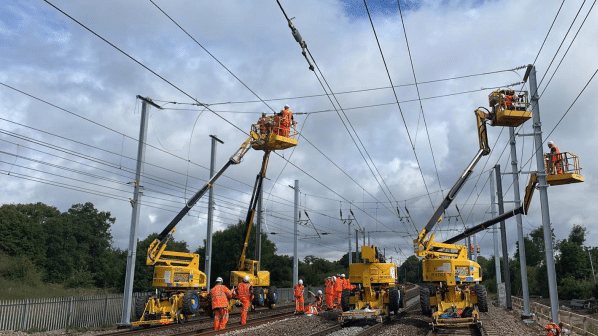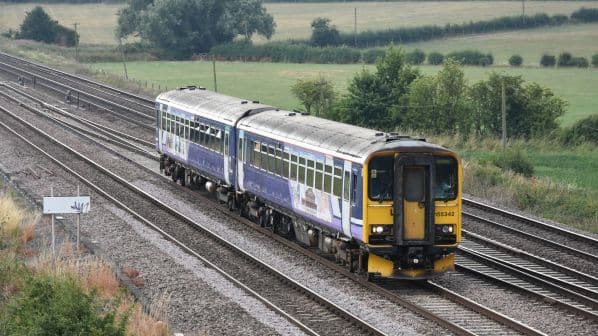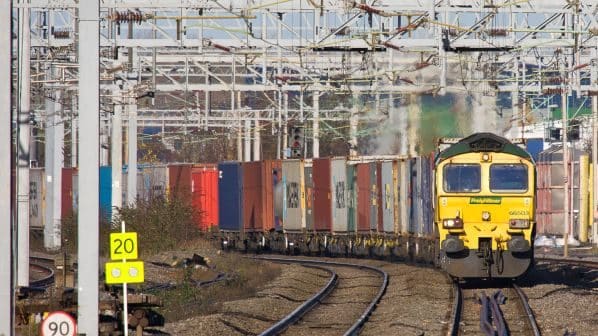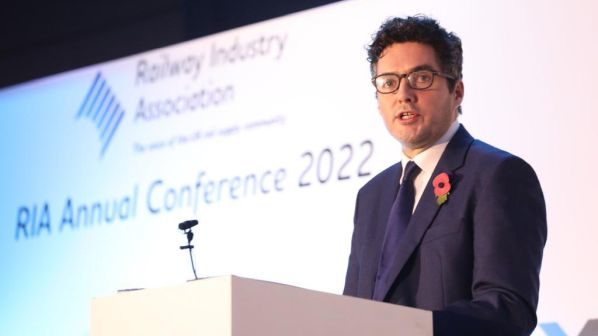BRITAIN’s Railway Industry Association (RIA) has unveiled its strategy to deliver a lower-cost, higher-performing and net-zero national railway by 2050, by completing planned electrification projects, new electrification and introducing battery-electric multiple-units (BEMUs).
RIA says that its “plausible, affordable and deliverable” strategy would decarbonise 100% of passenger and 95% of freight operations. It would also enable the railway to accommodate rising passenger demand and meet the government’s rail freight growth target of 75% by 2050.
The strategy will not require significant new public funding in the next 10 years, as it builds on existing electrification plans. RIA also says that it will reduce costs by breaking the cycle of “boom and bust” in both rolling stock orders and infrastructure spending.
At present, 38% of Network Rail (NR) infrastructure is electrified, and RIA says that a further 28% will need to be electrified by 2050 to meet the net-zero target. It follows the Chartered Institute of Logistics and Transport (Cilt) in recommending 1260km of electrification to replace diesel on 95% of freight traffic.
“If a portfolio approach to electrification is taken, rather than simply project by project, this will lead to a rolling programme of electrification, driving continuous improvement in unit costs due to increased experience, process efficiencies and technological innovations,” the strategy says.
The remaining 34% of the network can be decarbonised by deploying BEMUs on up to 133 of the 216 unelectrified passenger routes identified by RIA. This assumes a range on battery power of 60-80km and fast recharging in stations or by drawing power from existing catenary.
In its recommendations, the strategy says that urgent consideration should be given to replacing with BEMUs the 1100 DMUs with a maximum speed under 160km/h and that will be 35 years old by 2030.
It also says that a cross-industry group should develop the RIA strategy and confirm the minimum additional electrification required to deliver net zero by 2050. This plan should be published to provide clarity to planners and investors.
The future Great British Railways (GBR) should consider long-term rolling stock needs and the sustainability of the supply chain, and produce a strategy to smooth out the current peaks and troughs in orders, possibly by awarding framework contracts.
GBR should also deliver the final strategy to deliver a net-zero railway by 2050, prepared by the Great British Railways Transition Team (GBRTT) in conjunction with the industry.
“Ordering a fleet of battery-electric trains, a strategic and a consistent approach to electrification and quick green wins on less intensively-used routes can all help achieve a more efficient and low-carbon railway by 2050,” says RIA technical director, Mr David Clarke.
“It is vital that the government now makes some decisions on infrastructure and rolling stock which will enable investors, rail planners and suppliers, as well as the wider rail economy, to deliver a better and more sustainable railway for passengers and taxpayers in the future.”
For detailed data on electrification projects and fleet orders, subscribe to IRJ Pro.




